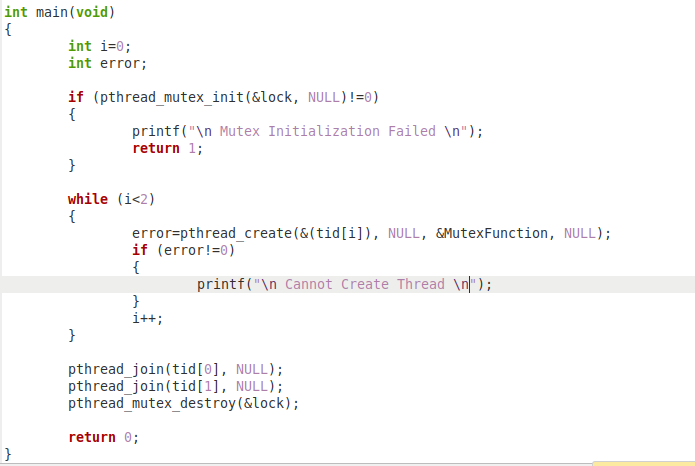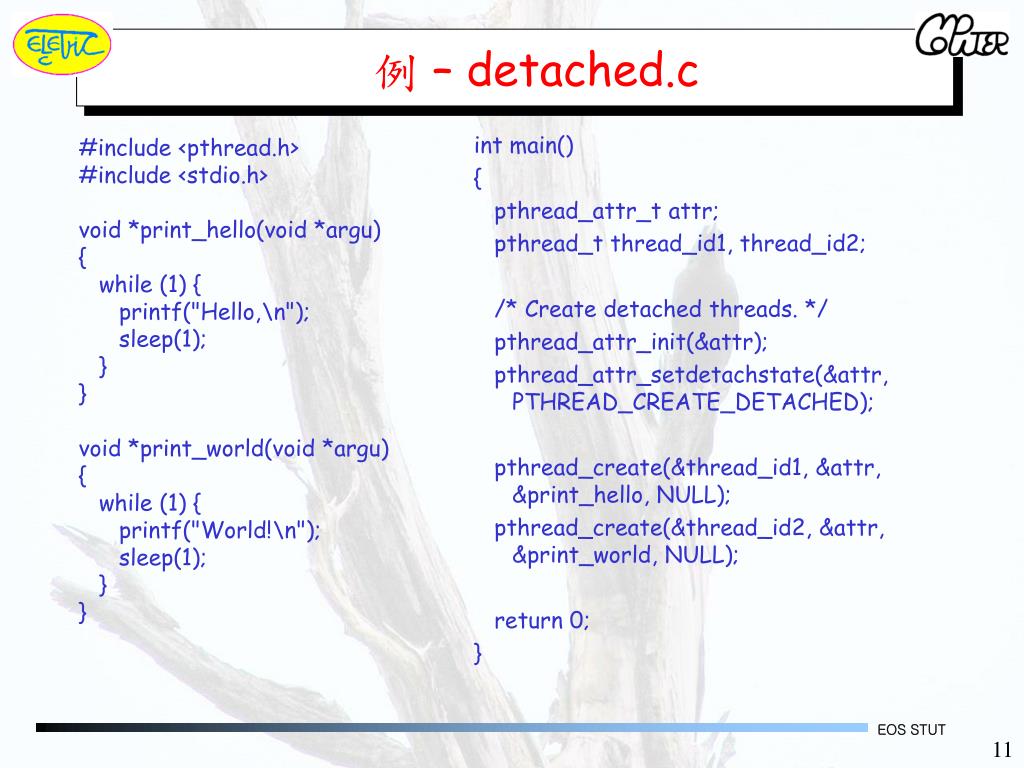

You basicly put cleanup_push at the top of your threadproc and cleanup_pop at the bottom, create an unwind function, and then at certain cancelation points a thread canceled by a call to pthread_cancel() will longjump back to threadproc and call the unwind function. Please see the License for the specific language governing rights and.
Parent pthread c programming code#
They are a model for allowing a thread to cancel anywhere in its code (uses a longjump) and then call a final cleanup function before exiting threadproc.

If you want your pthreads code to be fully. Beyond that, the program is an absurdly inefficient way of saying. The purpose of my post is to find out if I missed anything in providing an example of a multithreaded C program.
Parent pthread c programming cracker#
The main thread, after setting fCloseThreads, can wait on the counter to go to zero by looping, sleeping, and checking the count.įinally, you might checkout pthread_cleanup_push and pop. In answering password cracker in c with multithreading, I ended up writing a sample in C, which is not my forte. However, it is required that another process can start to write after the parent process or the child process has finished. The function of the following program is to create a piece of shared memory, so that both the parent process and the child process can write data to it. The counter would need to be a global of sorts. Using mutex to synchronize multiple processes. Threads can use any of the following synchronization methods: mutexes allow only one thread to own the mutex at a given point in time. Another way is to increment a counter when a thread enters its thread proc and then decriment the counter when it exits. Processes are defined as a unit of resource ownership (e.g., a memory area) and contain one or more threads. Although, technically not a part of C, POSIX threads are commonly. You need to wait for the threads to quit. POSIX threads (Pthreads) is a widely used standard for writing multi-threaded programs. Have the threads check that variable in their “loop” and nicely quit when it is set to 1. Set it to 1 when you want the threads to quit execution. You can use a global variable for the entire program.


 0 kommentar(er)
0 kommentar(er)
